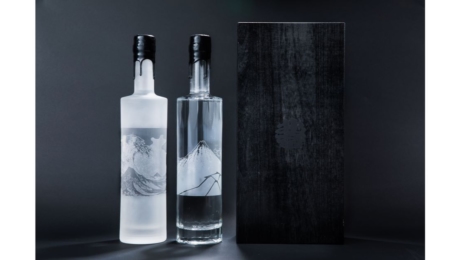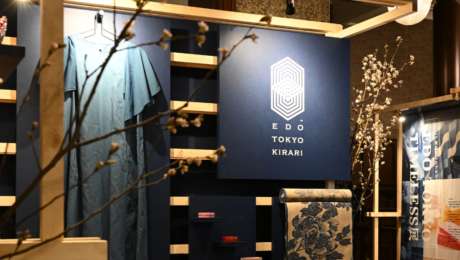![[Carre MOJI ✖️ Tatematsu] Rediscovering Japanese Identity through Aesthetic Shadows](https://en.edotokyokirari.jp/wp-content/uploads/20230629104821/31533d9ddf1d204cee539813dc7438a7-1224x720.jpg)
![[Carre MOJI ✖️ Tatematsu] Rediscovering Japanese Identity through Aesthetic Shadows](https://en.edotokyokirari.jp/wp-content/uploads/20230629104821/31533d9ddf1d204cee539813dc7438a7-750x750.jpg)
[Carre MOJI ✖️ Tatematsu] Rediscovering Japanese Identity through Aesthetic Shadows
2023.06.30
LIFEAn exhibition showcasing the enchanting world of calligraphy, luxury wallpaper, and elaborate lanterns.
Wherever there is light, there is also shadow. When light sources were still scarce and shadows were commonplace in Japan, the writer Junichiro Tanizaki abundantly expressed his observations of the beauty of shadows in his essay “In’ei Raisan” (In Praise of Shadows).
Imagine you were living in a traditional Japanese houses with eaves. Tanizaki argued that the presence of shadows enhanced traditional Japanese architecture.
Recreating this aesthetic world is Carre MOJI, a firm based in Shibuya Ward, Tokyo that turns traditional Japanese calligraphy into interior art, and Tatematsu, a producer of Edo-style lanterns with kumiko woodwork in Edogawa Ward, Tokyo. They came together to host an exhibition titled “In’ei Raisan: Inheriting Japanese Aesthetics.”
Kumiko woodwork has been passed down since the Asuka period (7th century) and involves assembling pieces of wood into geometric patterns without the use of nails. It is a delicate traditional craft of joining individual pieces of wood together.
The exhibition venue is located in Ginza, Chuo Ward, away from the hustle and bustle of the metropolis. As soon as you step inside, you will find yourself in the world of shadows. The intricate craftsmanship of Edo-style lanterns with kumiko woodwork by Tatematsu gently illuminates the venue, creating a nostalgic atmosphere of dimly lit traditional Japanese houses.
The exhibition is surrounded by walls adorned with Carre MOJI and kinkarakami. One of Japan’s precious traditional arts, kinkarakami are luxurious wallpaper made from washi paper that is gilded with metal foil, embossed with artistic patterns, and colored.
The interplay between the shadows of the kumiko woodwork and kinkarakami created by the lanterns expresses traditional Japanese aesthetics while Carre MOJI’s calligraphy inspires a fresh sense of awe.
Junichiro Tanizaki once wrote, “Honestly, the beauty of the Japanese tatami room is dependent on the intensity of light and shadow within and nothing else.” Come see the exhibition for yourself and maybe it will awaken the Japanese aesthetic sense and appreciation of light and shadows laying dormant inside you. Perhaps the spirit of Junichiro Tanizaki himself may slip in for a visit.
[Event Details]
In’ei Raisan: Inheriting Japanese Aesthetics
https://www.carremoji.jp/ineiraisan/
[Exhibition Period]
July 1st (Sat) – 17th (Mon, public holiday)
10:00–17:00, Free admission
Closed on Tuesday, July 4th and 11th.
[Venue]
Ginza Apollo Showakan Gallery YOHAKU
Address: B1, Ginza Apollo Showakan, 4-12-20 Ginza, Chuo Ward
*1-minute walk from Higashi-Ginza Station on the Tokyo Metro Hibiya Line, 4-minute walk from Ginza Station on the Tokyo Metro Ginza Line
To fully express the beauty of Tatematsu’s lanterns, the lighting in the gallery will be kept to a bare minimum.
Carre MOJI’s artwork and Kinkarakami wallpaper will adorn the walls, allowing visitors to indulge in the interplay of light and shadows.
[Business Info]
Carre MOJI Corporation
Edo Kumiko Tatematsu
http://www.paw.hi-ho.ne.jp/kumiko-tatematsu/





